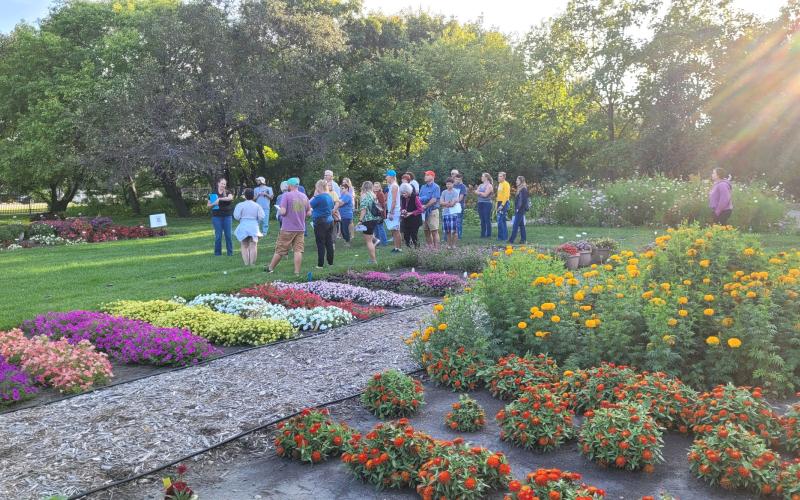Original article by David Graper, former SDSU Extension Horticulture Specialist and Master Gardener Program Coordinator. Updated by Vaughn Reints, SDSU Extension Horticulture Assistant; and Kristine Lang, Assistant Professor, Agronomy, Horticulture, and Plant Science. Special thanks to SDSU Extension Master Gardener Trainee, Max Peterson, for editorial review of this article.

Sweet Woodruff (Galium odoratum) is an attractive plant that makes a finely textured ground-cover perennial for shade gardens. The common name of Sweet Woodruff comes from the sweet fragrance of the foliage, which is particularly noticeable as cut foliage dries, and is sometimes used in potpourri.
In late Spring, it grows clusters of tiny, four-petaled white flowers. But even after the flowers fade, Sweet Woodruff maintains its semi-glossy foliage throughout the year. The leaves are in a whorled arrangement on the fine, wiry stems. The leaf arrangements measure about 3 inches in diameter, and include 6 to 8 narrow leaflets, spaced every few inches along the upright stems.
Sweet Woodruff plants grow to about 10 inches in height and slowly spread by short rhizomes. The plants form a dense canopy of leaves that keeps most weeds from growing beneath.
Planting and Care

Sweet Woodruff grows well in full shade to part-sun, but it needs plenty of water to tolerate the sunnier locations. Sweet Woodruff prefers slightly acidic, well-drained soils, and it is intolerant of standing water.
It works well as an edging plant along borders, or surrounding larger plants, like Hosta, ferns, Dicentra, or Ligularia. In addition to Sweet Woodruff, other shade-loving options for added color, height, and texture in the landscape include Coral Bells (Heuchera), Brunnera, and Astilbes. To add diversity, incorporate plantings of other perennial ground covers, such as Canadian Wild Ginger in the garden bed. Be cautious when planting Sweet Woodruff alongside other aggressive ground covers, like Lily-of-the-Valley or Snow-on-the-Mountain, as those plants can easily take over, and become invasive without proper management. Sweet Woodruff may be propagated by division in the spring.
Pest and Diseases
Sweet Woodruff is typically low maintenance in terms of pest and disease control. Deer usually avoid eating this plant, which can be helpful when deer are a problem. Sweet Woodruff is a reliable ground cover for shady areas.
Powdery mildew is a fungal disease that may appear as a white powder on Sweet Woodruff leaves, especially in areas with poor air circulation. Ensuring adequate spacing between plants, and avoiding overhead watering can mitigate this disease. If powdery mildew does develop; however, prune affected leaves and apply fungicides or organic treatments like neem oil. Discard pruned leaves properly to prevent re-infection.


